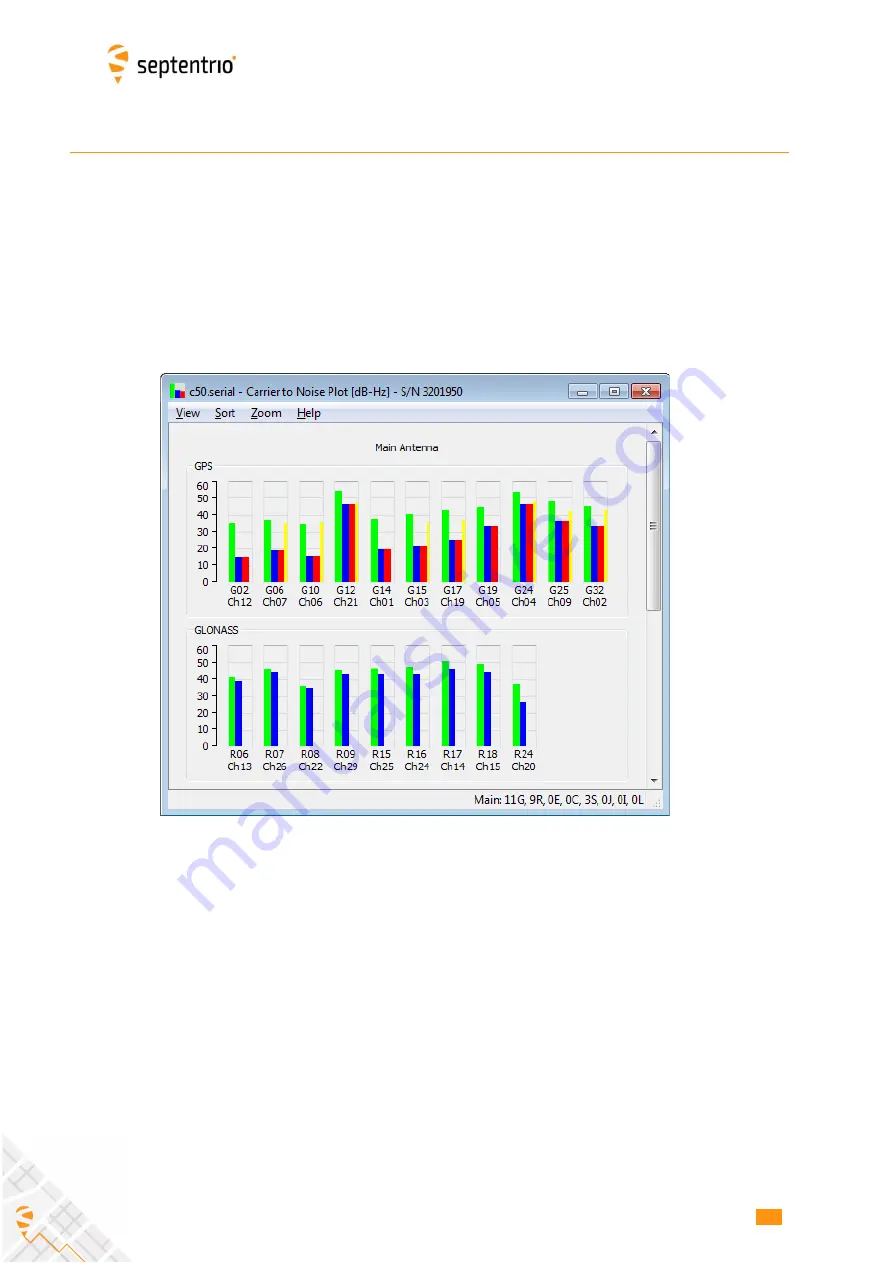
34
34
EMC Considerations
34
Appendix C
EMC Considerations
In applications in which the electronics are collocated with the GNSS antenna, cross-talk
could be a major concern. GNSS signals are very weak and easily interfered by radiated
harmonics of digital signals.
The most useful indicator of the signal reception quality is the C/N0 of the satellites in
view. The C/N0 can be viewed in the RxControl graphical interface by clicking
View / Carrier
to Noise Plot
. In open-sky conditions, the C/N0 values should reach up to 50 dB-Hz for the
strong signals on L1, and up to 45 dB-Hz on L2, as illustrated below.
If the maximum C/N0 is lower than expected, interference and cross-talk from nearby
electronics is likely, and the source of the problem needs to be identified. This is where
the RF spectrum monitor built in the receiver comes in handy. The spectrum monitor can
be accessed in RxControl under the
View / Spectrum View
menu. The spectrum can also be
monitored offline if the
BBSamples
SBF blocks are logged.
The figure below shows a clean open-sky L1-band spectrum. The bump at 1575MHz
corresponds to the GNSS signals at the L1/E1 frequency, and is normal.



































